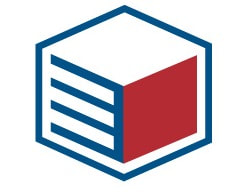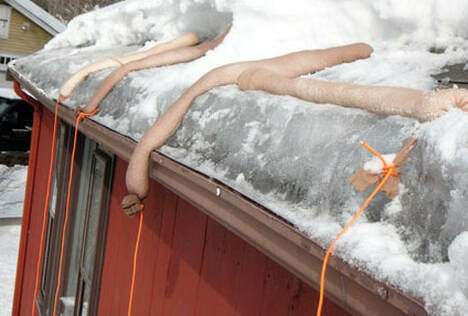|
25/1/2019 0 Comments REMOVING ICE FROM ROOFSIce melting socks! (nylon hose filled with safety salt) The Ice Storm that hit eastern Canada in 1998 gave rise to extensive research into ice accumulation on roofs. Many of the techniques discovered are for skilled tradespeople only. No ice problem on a roof is serious enough to risk broken bones—or worse. And there is a delicate balance between removing ice and damaging the roof. Thick ice is hard to remove. You must decide if trying to remove it will cause more damage than leaving it on the roof. Tools, such as hammers, shovels, scrapers, chain saws, and devices such as shoes with ice spikes can damage roofing materials or the structure below. Chemical de-icers can discolor shingles, break down membranes and corrode flashings and drains, and damage your shrubs and flower beds.
The first thing to do during freezing rain conditions is to monitor your roof every day. Is the ice causing a structural problem? Is there water damage? Do you really have to do anything? Secondly evaluate your capabilities and limits. Do you have the equipment, the agility and enough help to work safely and efficiently? If you don’t, get professional help before the situation becomes urgent. Third, to prevent damage do as little as possible. Total clearing has the greatest potential for damage to the roof and to people and property below. Clearing dangerous overhangs and icicles, and creating drainage paths for melt water is probably enough. On a sloped roof, your goal is to make drainage paths through the ice on the lower edge of the roof. That’s where most ice dam and water back-up problems occur. Try to shovel off loose snow to expose the ice. Physically removing ice from a sloped roof is always dangerous - both for the person doing it and for the roof. Damage caused by removing ice can invalidate your shingle warranty, so if it must be removed have it done by a professional with proper equipment and training. Call a professional roofer or building contractor. Important lessons learned in 1998 Starting at the bottom can release ice above you that might slide down and hit you. Small bumps of ice that remain on shingles are caught by chunks of ice sliding down, which catch and rip off the shingles. Working from the top down allows you to use the ice on the roof as a slide for the ice that is being freed.
0 Comments
Leave a Reply. |
AuthorGil Strachan is a professional home inspector, representing Electrospec Home Inspection Services in east-central Ontario since 1994. CategoriesAll Appliances Buying And Selling Cooling Electrical Environmental Exterior Health And Safety Heating Home Improvement Home Inspection Insulation Insurance Interior Plumbing Roofing Special Structure Archives
January 2024
|


